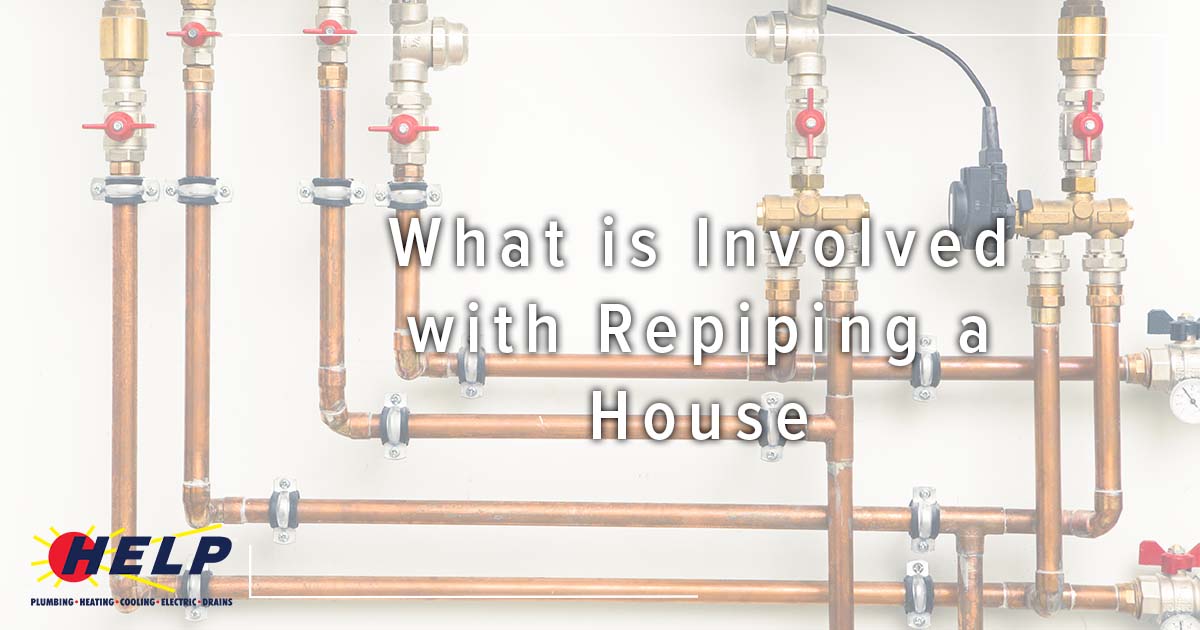
Your home’s plumbing needs maintenance, just like any other aspect of your house. Over time, pipes can corrode and are prone to leaks and other issues, which can lead to low water pressure, discolored water, or strange noises.
If you’re spending a lot on repairs, living in an older home, or remodeling, you should consider repiping your house. Learn everything you need to know about repiping a house, such as what you can expect from the renovation and how to know if the time is right.
What Is Meant by Repiping a Home?
Repiping is when you replace the old plumbing system in your home with a newer, updated one. This is usually done in older homes with degraded pipes or problems, or during a major home remodel.
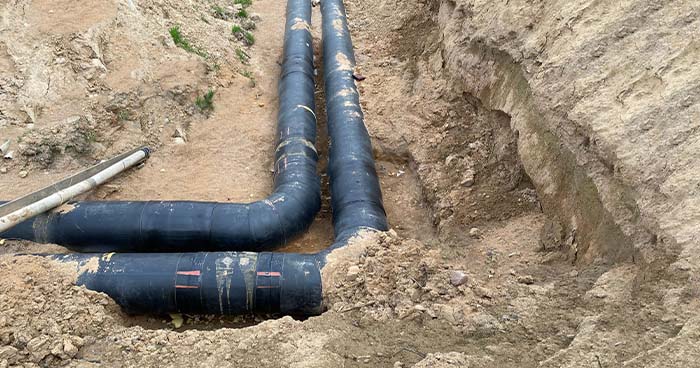
When Would a Homeowner Need to Repipe a Home?
Choosing to repipe your home is a major undertaking. Here are some signs it’s time to repipe your home.
Your Home Has Lead Pipes or Galvanized Steel Pipes
Most homes built over 100 years ago were fitted with lead pipes. These pose a health hazard when lead leaks into the water supply. Though many older homes with lead had updates, yours may not have. It’s crucial that you check to see if you have lead pipes, and if so, contact a plumber for a full repiping.
No Matter How Many Times You Fix Your Pipes, They’re Still Broken
Pipes that always have leaks or problems can really rack up your plumbing repair costs. If this is the case, it’s more cost-effective to repipe your home and correct the recurring plumbing issues. You’ll also benefit from having a brand-new system that’s intended to last for decades.
You’re Remodeling Your Home
Remodeling your kitchen or bathroom or adding rooms to your home may mean installing some new plumbing fixtures. This is a good time to consider repiping your home and updating your plumbing. Otherwise, you may have problems where the new and old systems come together from your remodel.
Before You Start – Get an Inspection and Estimate
A full repiping of your home is a big investment and renovation. You will need to bring in a plumber to inspect your old system and provide an estimate for the work. You should consider multiple estimates from local plumbers to see which offer is the best. Then, you can decide if you want to fully repipe your home or work in sections.
What to Expect During the Repipe Process
During repiping, your home will be under construction in most rooms. Here’s what you can expect from the process:
Preparations
Plumbers need to cut holes in drywall to access the old pipes and construct the new ones. You should move all your furniture away and cover it to protect against dirt or damage. You should also consider any valuables that could be damaged, such as flat-screen televisions, art, or other décor.
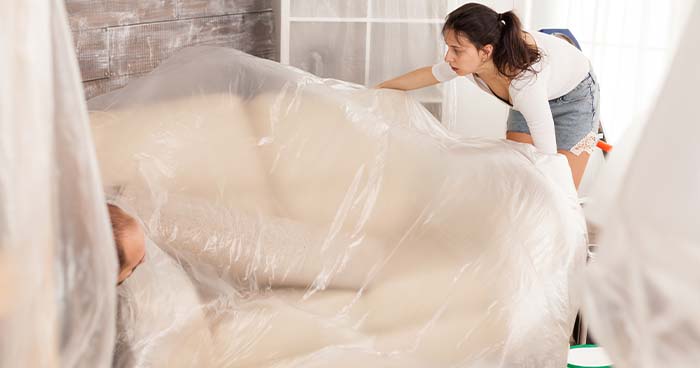
Your water will need to be shut off for a period during your renovation. You’ll have access to water from the old pipes some of the time, as the plumber will build the new system next to the old one, but there will be time that the water will be completely off while the plumber connects the system.
Plumbers Need Access
The plumber will need to access the drywall in many rooms to install a new pipe system. Rest assured it will be fixed and painted after the fact, but before the work starts, you will need to ensure they have access to the walls. Move furniture and artwork or wall hangings out of the way in advance.
How Long Does the Process Take?
Repiping can take anywhere from two or three days to a week, depending on the size of your home and the number of bathrooms. Your water service will be off during some of this time, so be sure to speak with your plumber about minimizing water disruptions.
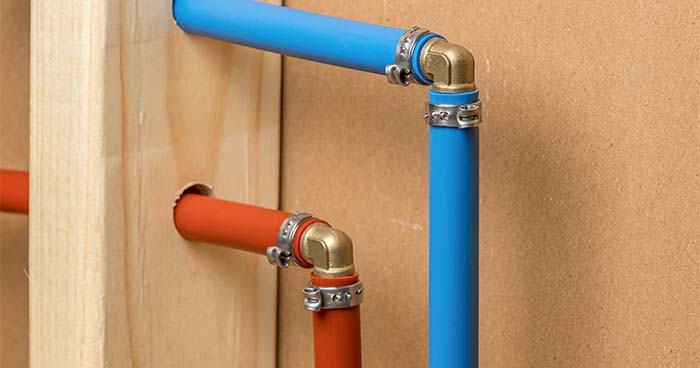
Permitting
Like other renovations, you will need a work permit for repiping. This should be done after the initial work.
Inspection and Finishing
Once your pipes are installed, you will need a professional inspection for the work. When the inspector says everything is okay, your plumber can patch the drywall and repaint your walls to make them look brand new.

If you’re considering repiping, contact the pros at HELP to set up a consultation!

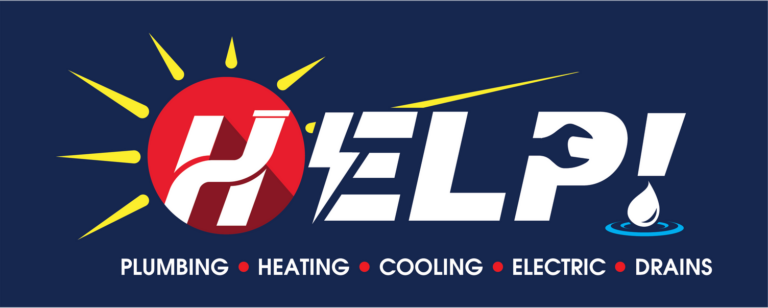
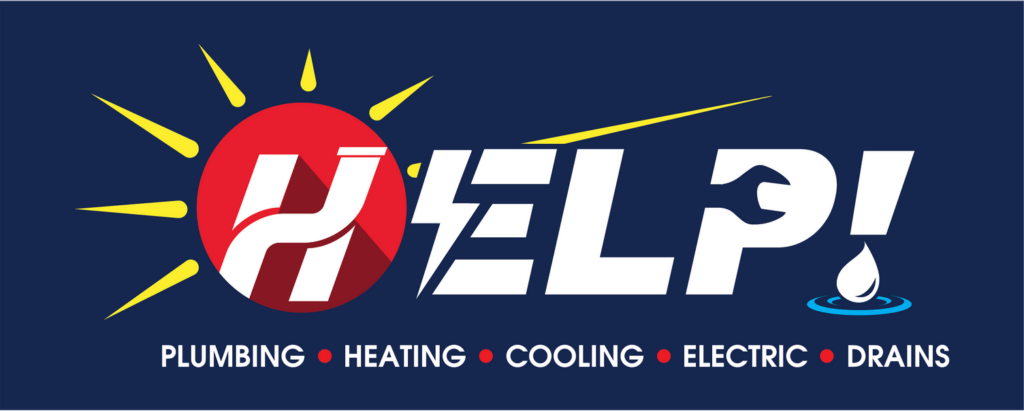
One Response